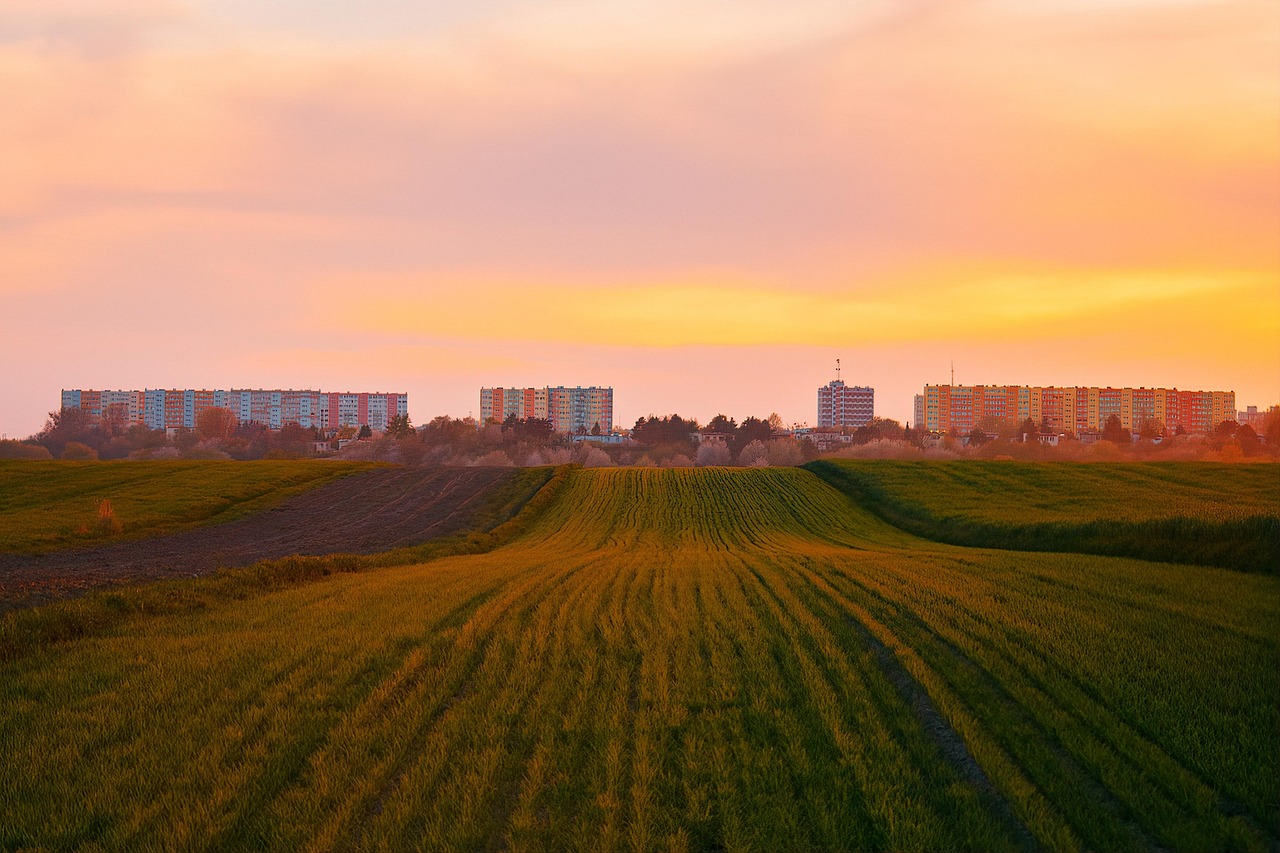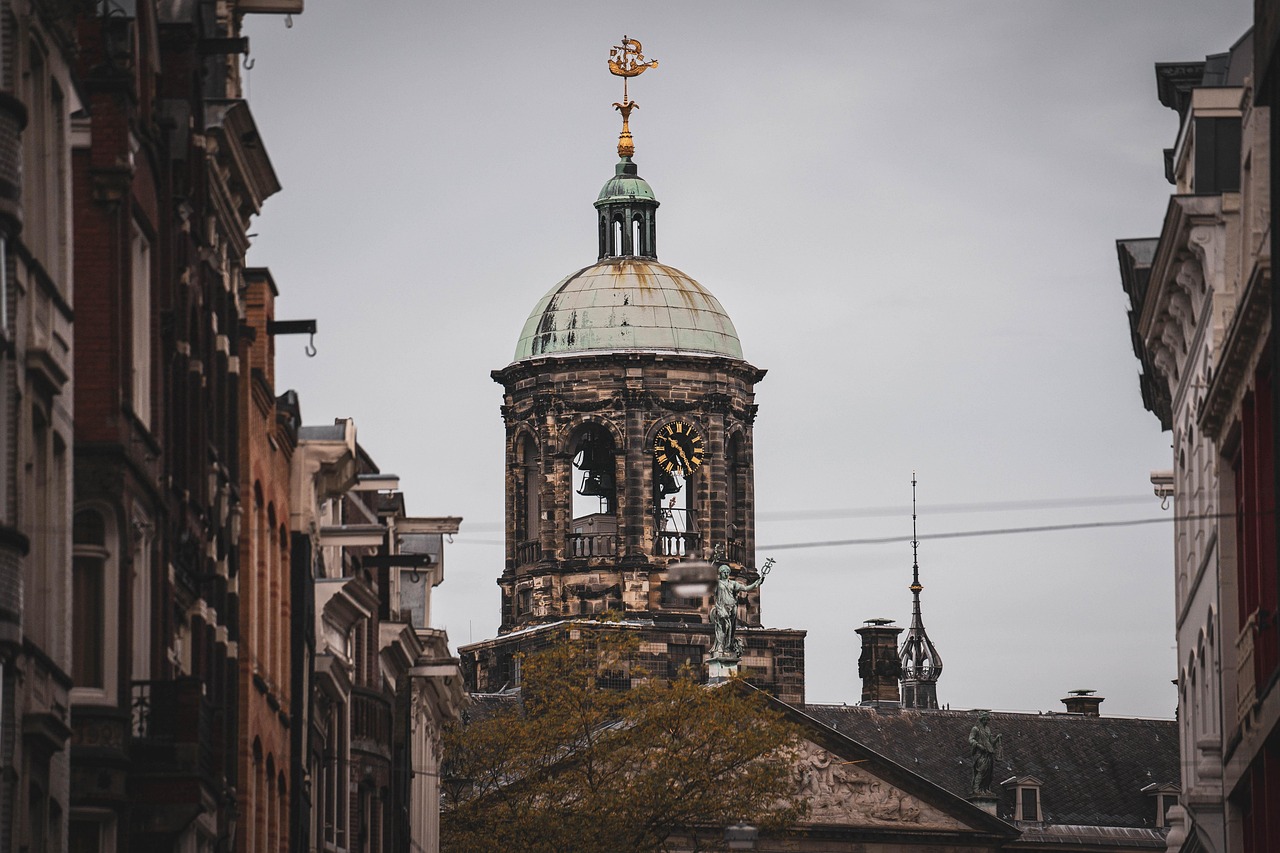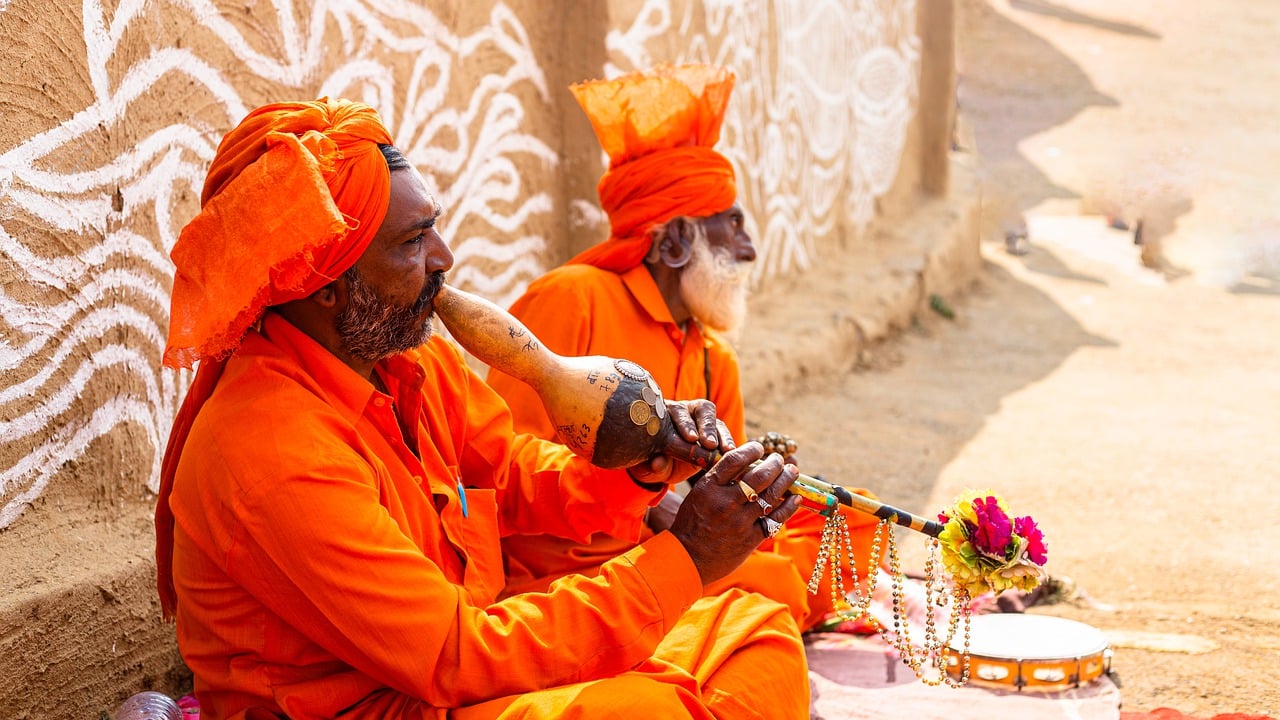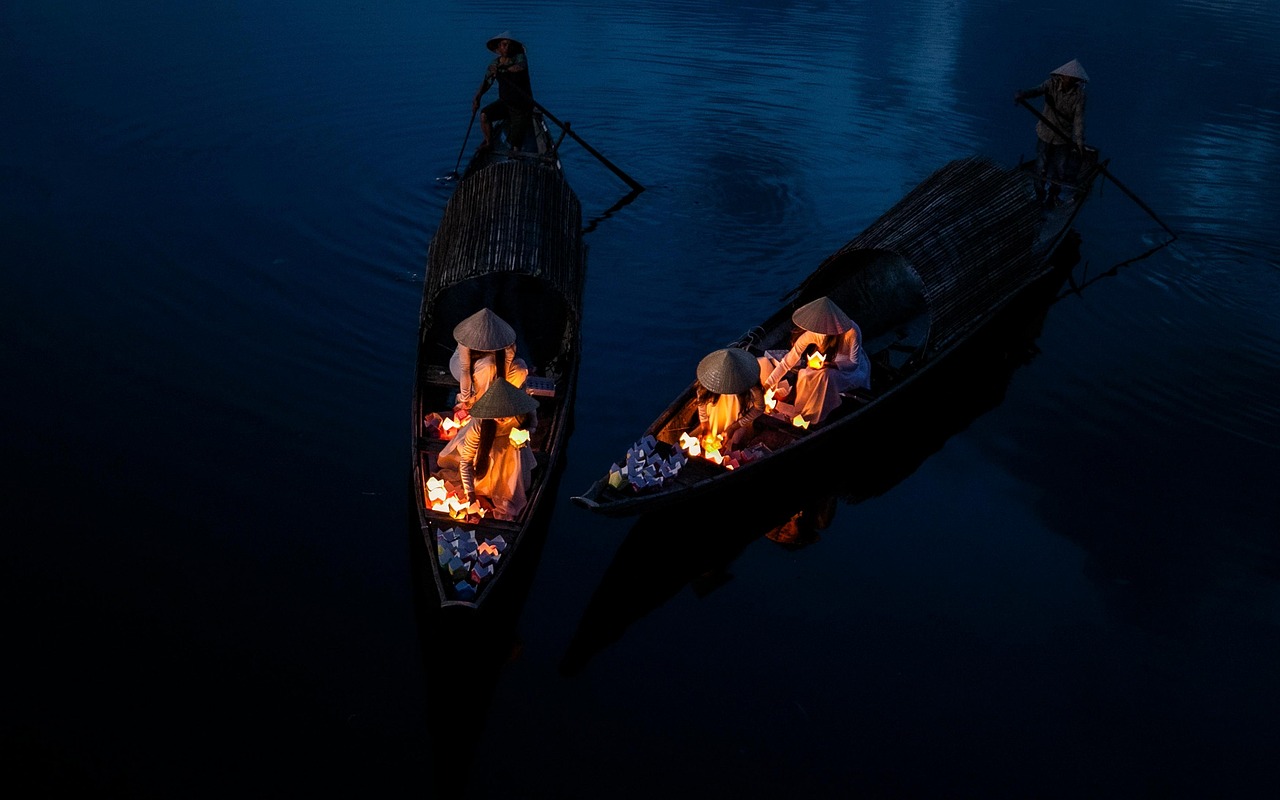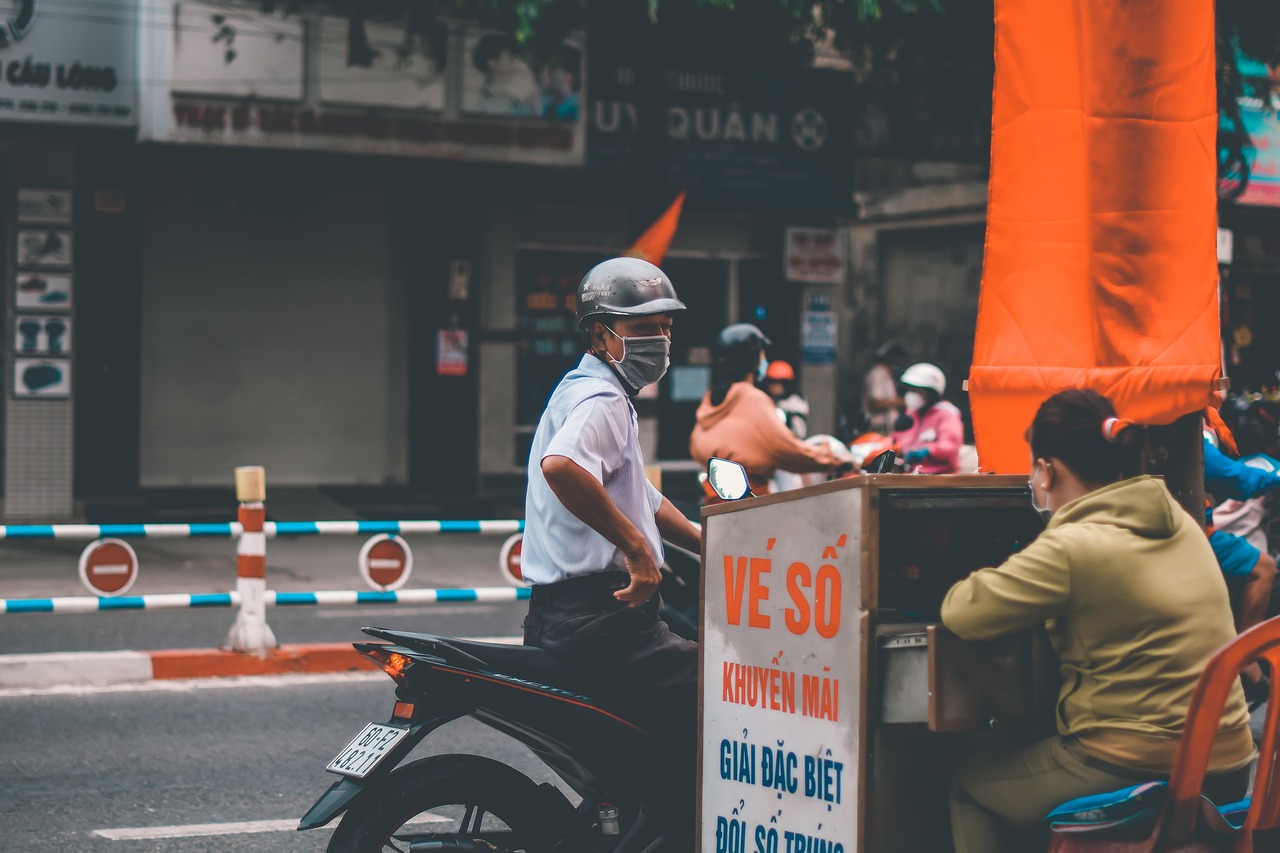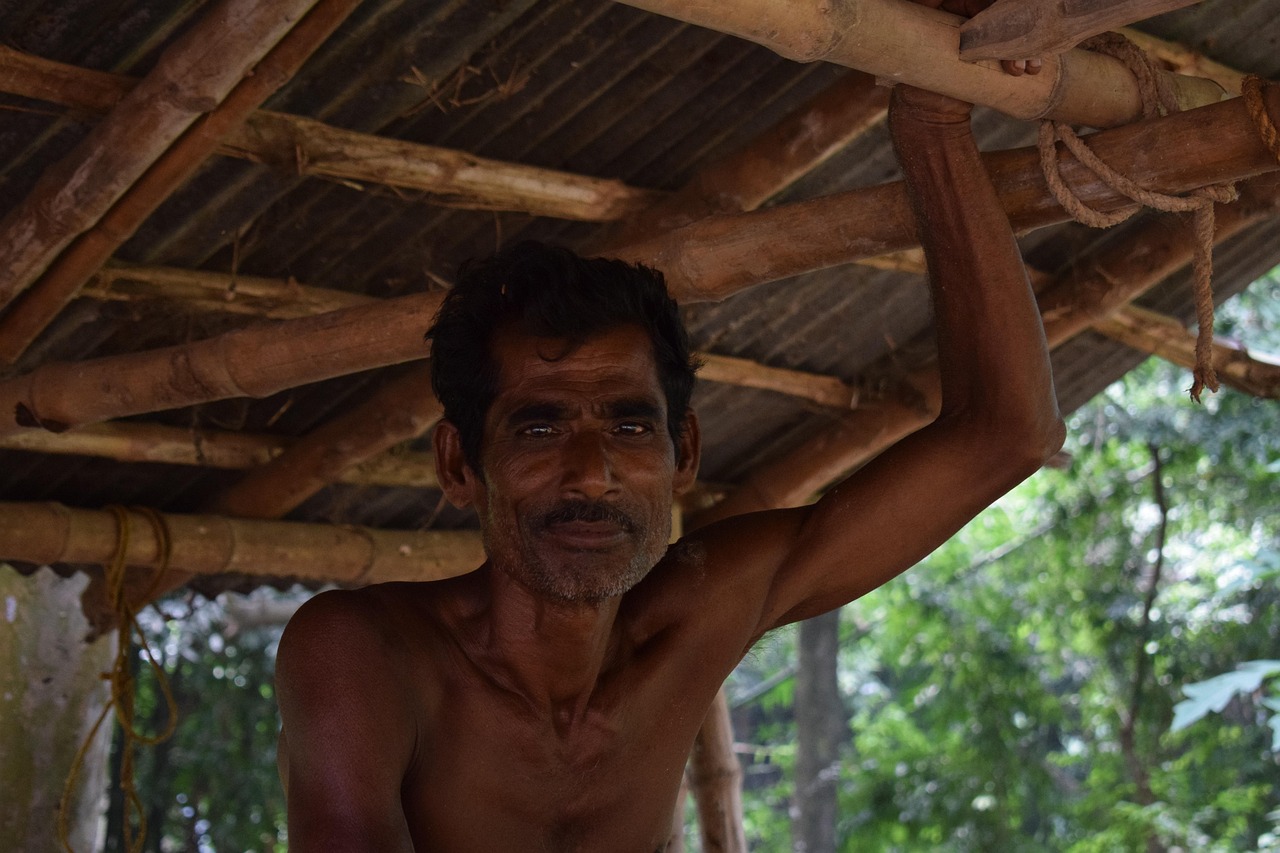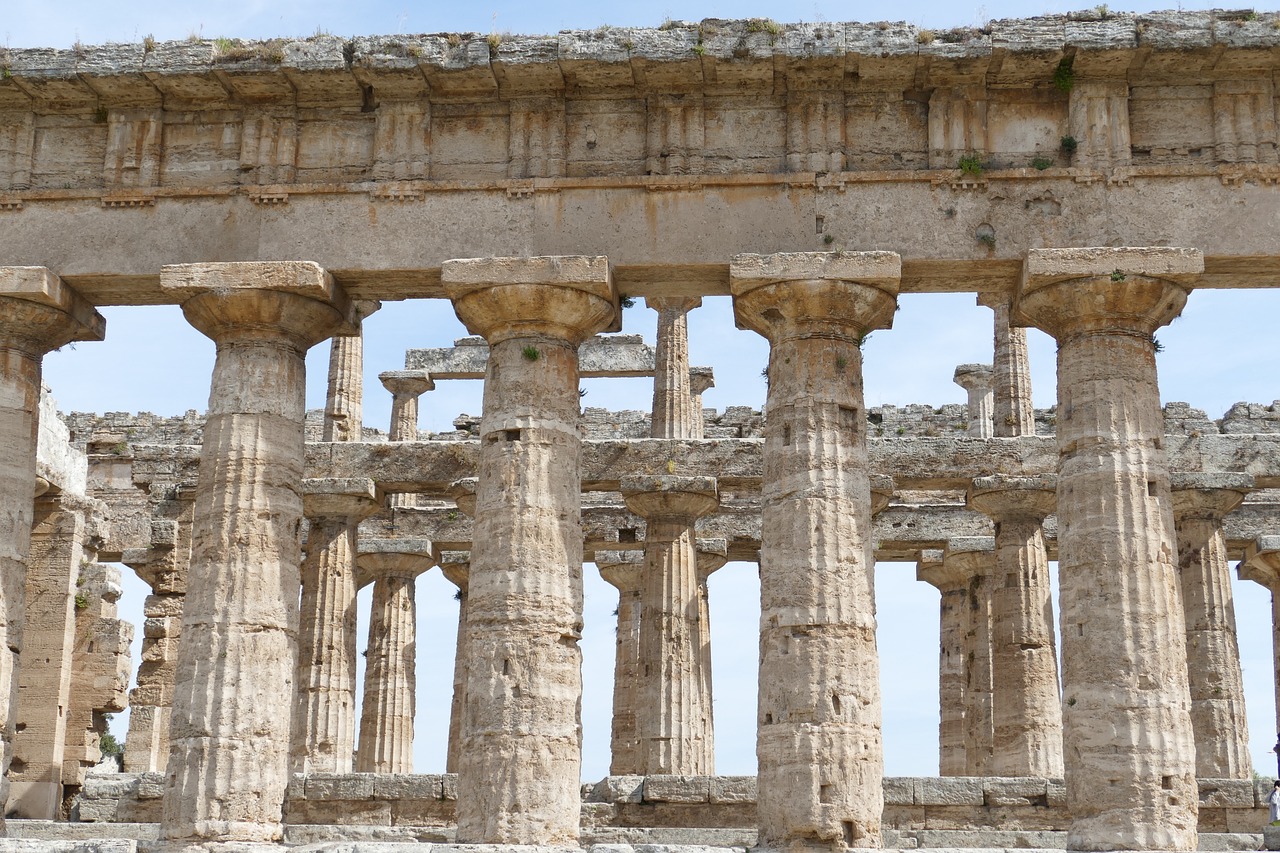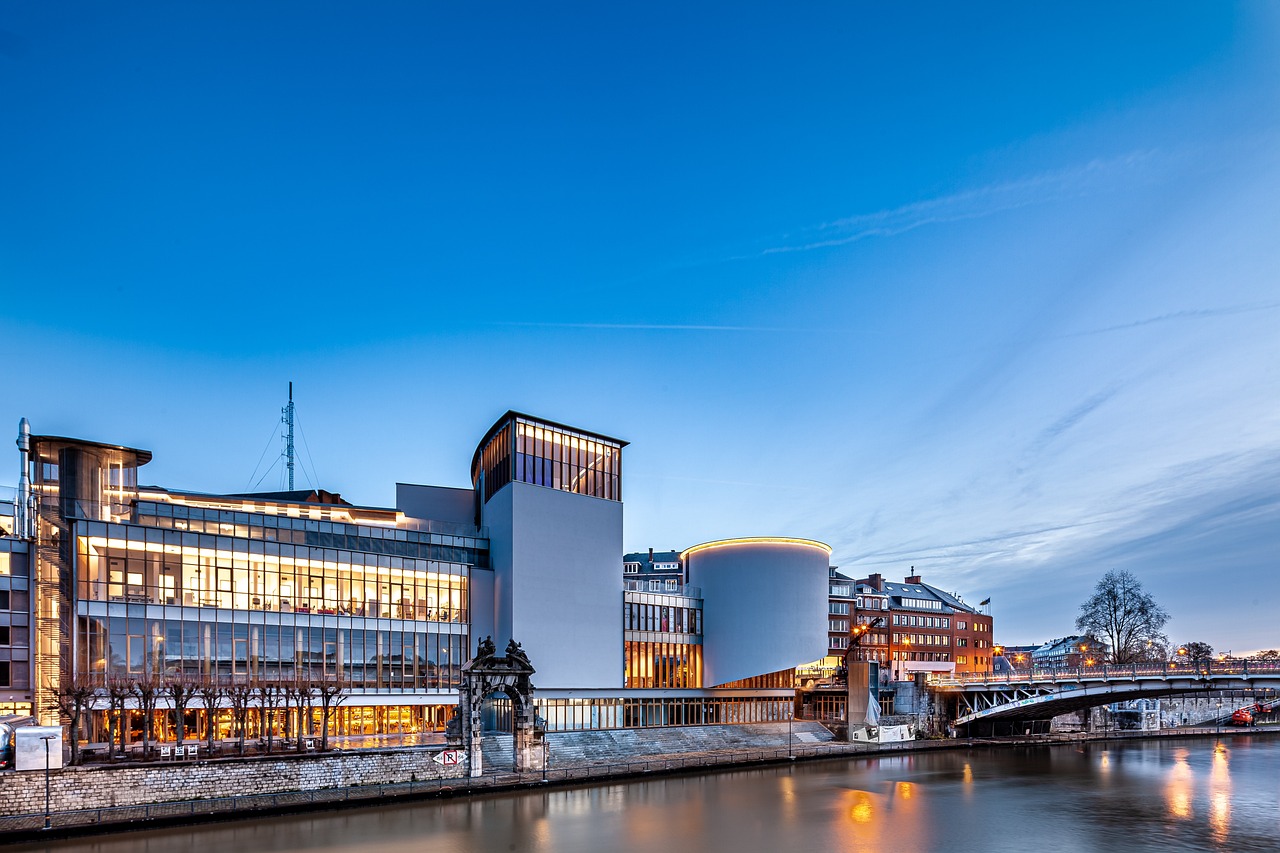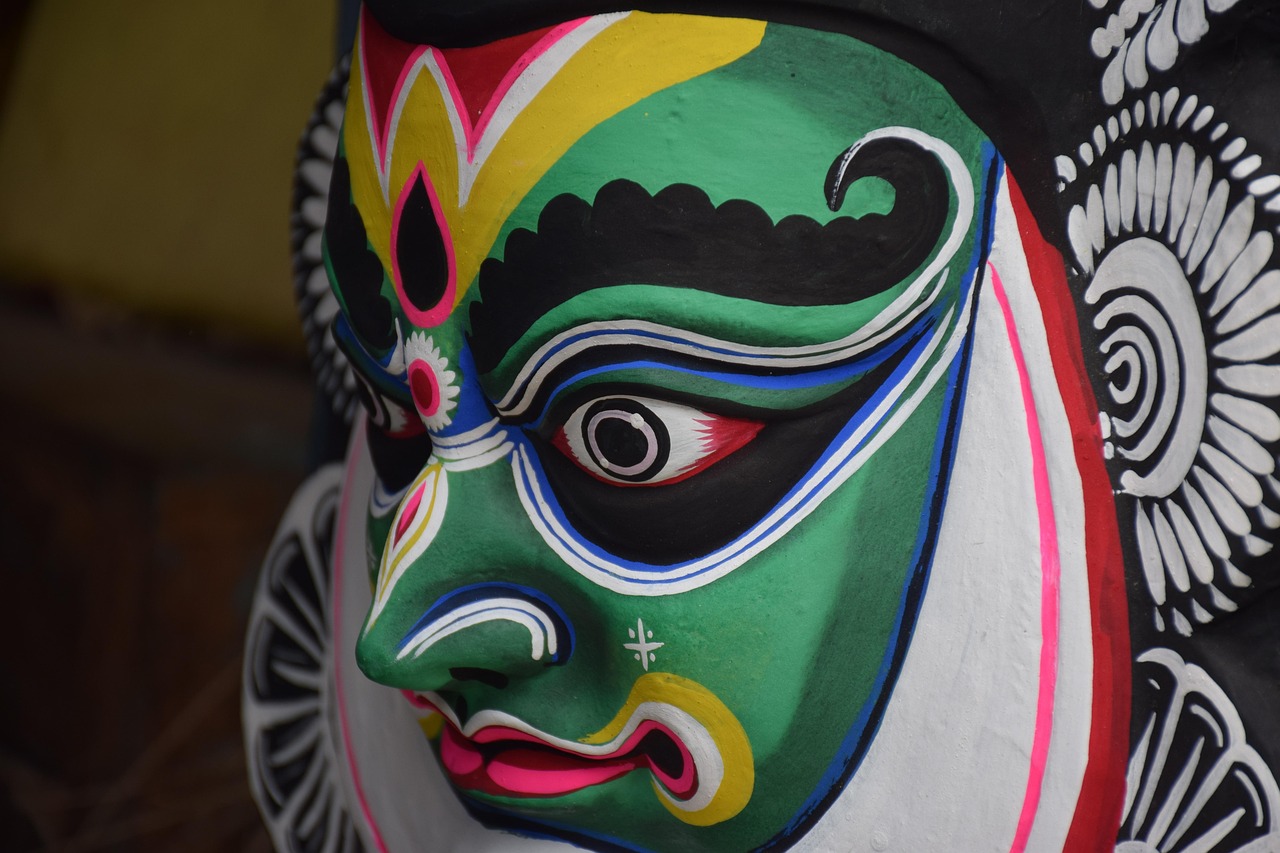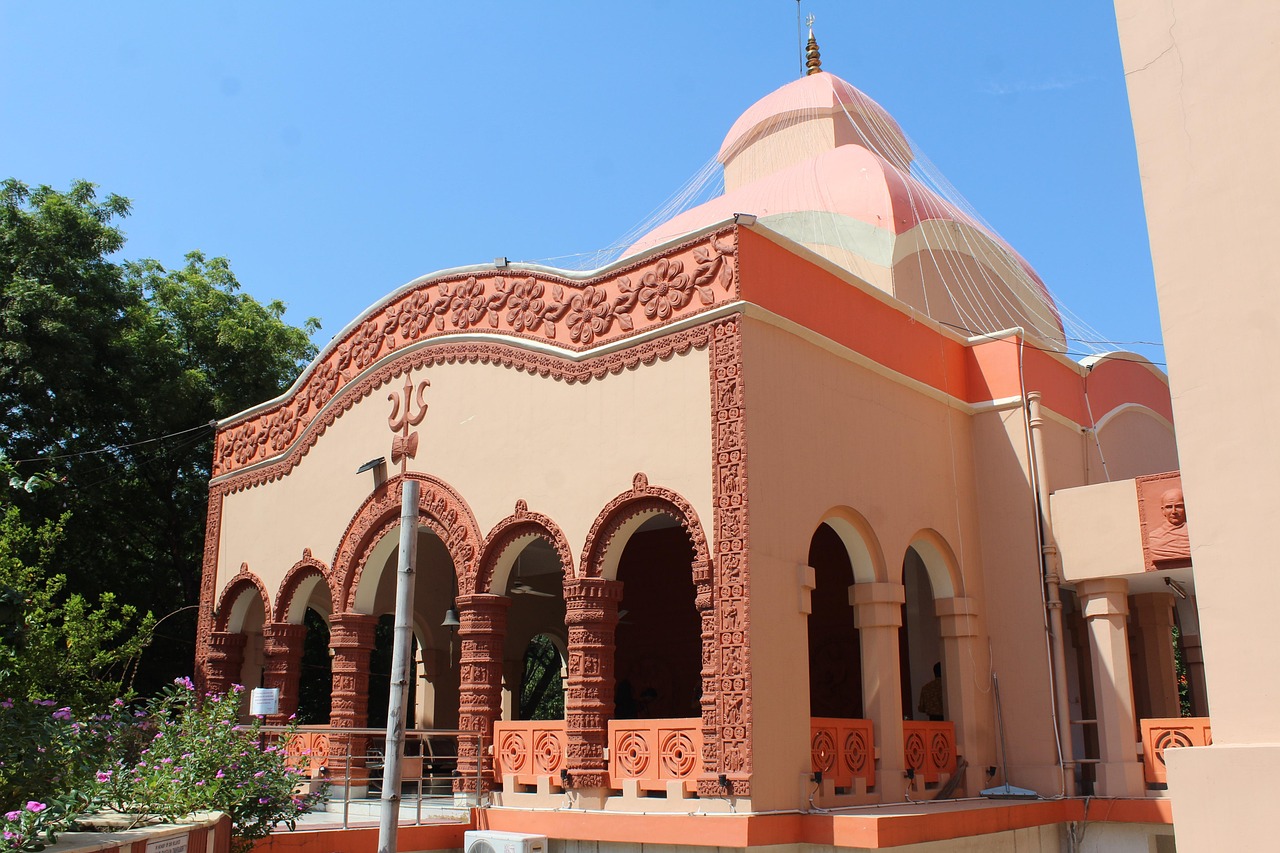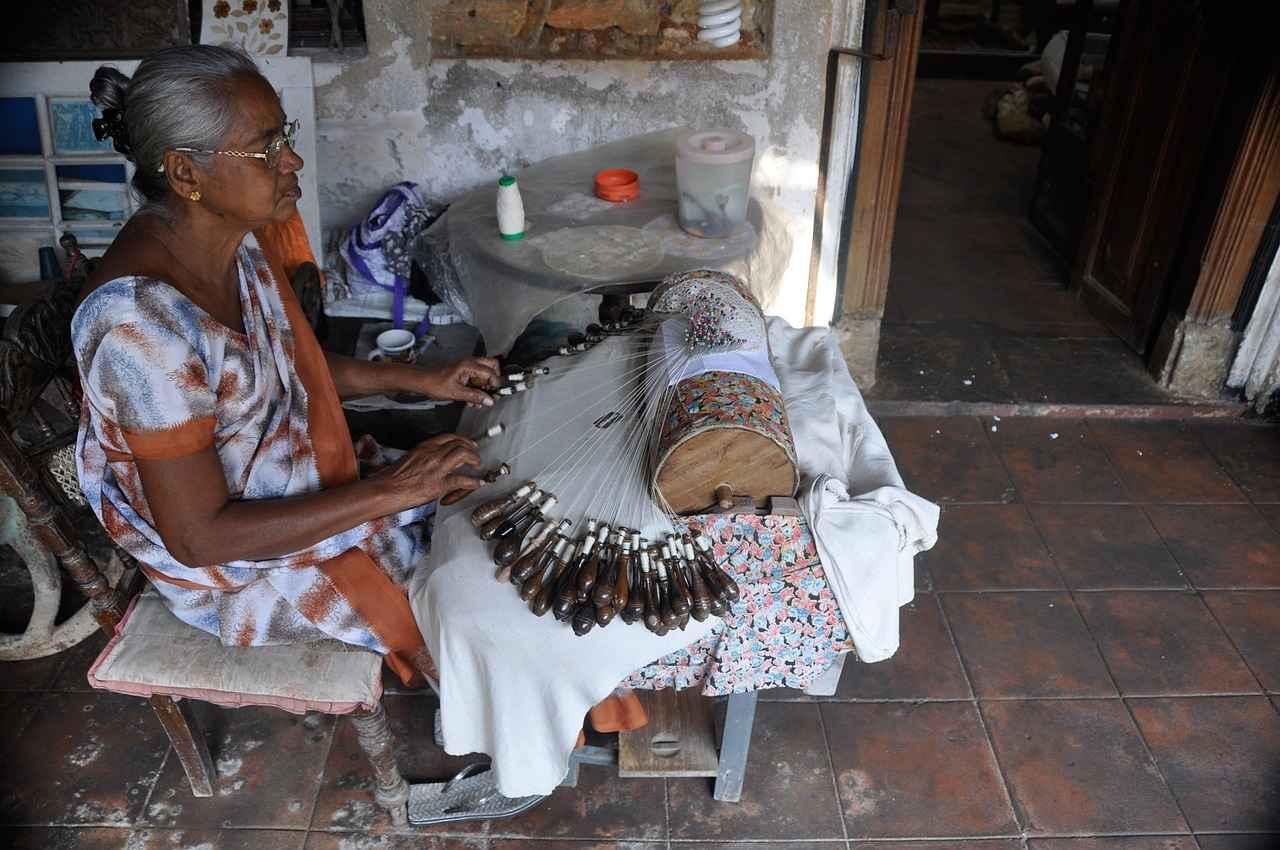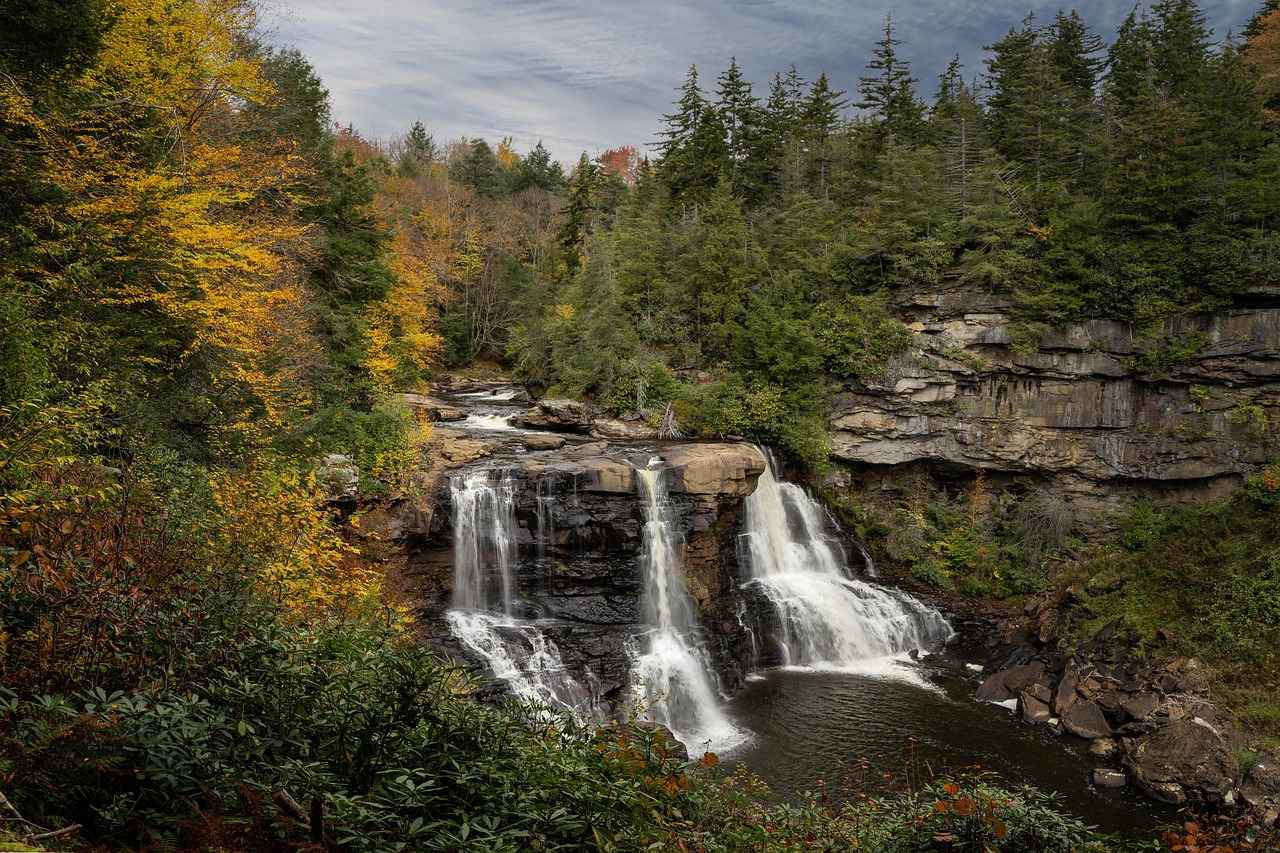Explore the cultural heritage, natural beauty, and artistic legacy of Santiniketan, a unique destination that offers a blend of tranquility and creativity, making it a must-visit for travelers.
- Rich Cultural Heritage: Santiniketan is steeped in history and culture, being the home of the famous poet Rabindranath Tagore, who founded the Visva-Bharati University, fostering an environment of artistic expression.
- The Legacy of Rabindranath Tagore: Established by Tagore, Visva-Bharati University promotes art, music, and literature, attracting students and scholars globally.
- Scenic Natural Beauty: The serene landscapes, with lush greenery and tranquil lakes, provide a perfect backdrop for relaxation and reflection.
- Artistic Vibes: A hub for artists and craftsmen, Santiniketan showcases a variety of traditional and contemporary art forms.
- Unique Festivals and Celebrations: Known for vibrant festivals that blend traditional customs with artistic expressions, creating a lively atmosphere.
- Culinary Delights: The culinary scene in Santiniketan offers a variety of delicious local dishes, allowing visitors to indulge in the flavors of Bengali cuisine.
- Accessibility and Connectivity: Easily accessible from major cities, making it a convenient getaway for travelers.
- Warm Hospitality: The welcoming nature of locals adds to the charm of Santiniketan, making visitors feel at home.
- Opportunities for Reflection and Meditation: The tranquil environment makes it ideal for those seeking peace and solitude.
- A Blend of Tradition and Modernity: Santiniketan beautifully merges traditional values with modern influences, appealing to diverse visitors.
Conclusion: Santiniketan offers a unique blend of culture, nature, and artistic expression, making it a compelling destination for travelers seeking a meaningful experience. Its rich heritage and serene environment are sure to leave a lasting impression.
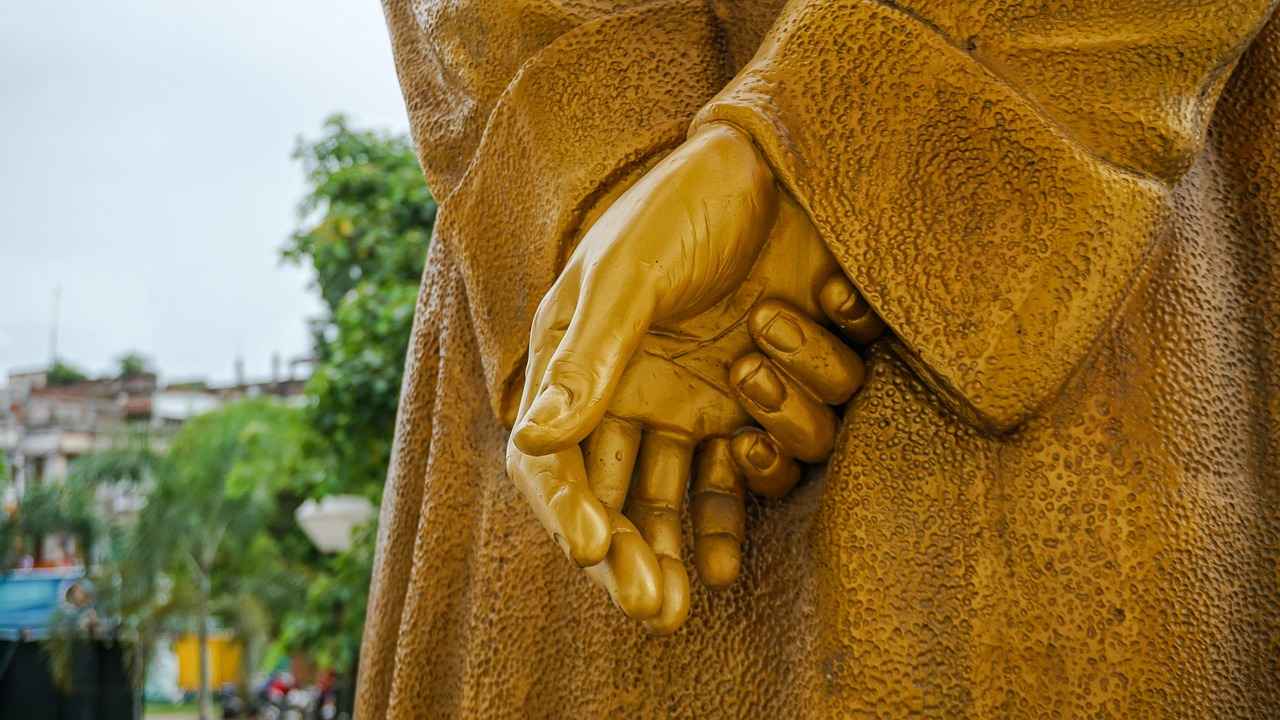
1. Rich Cultural Heritage
Santiniketan is a treasure trove of history and culture, deeply intertwined with the legacy of Rabindranath Tagore, a Nobel laureate in literature. This serene town in West Bengal is not just a destination; it is a journey into the heart of artistic expression and intellectual pursuit. Tagore founded Visva-Bharati University in 1921, aiming to create a global center for learning that transcends traditional boundaries.
The university is renowned for its unique educational philosophy, which emphasizes creativity and holistic development. Tagore believed in nurturing the mind and soul through arts, music, and literature. This vision continues to influence the curriculum at Visva-Bharati, drawing students and scholars from around the world who are eager to immerse themselves in its vibrant atmosphere.
- Tagore’s Influence on Education: His innovative approach to education encourages students to explore their artistic talents and engage with the world around them.
- Cultural Programs: Regular festivals and cultural events celebrate Tagore’s legacy, showcasing various art forms and enriching the cultural landscape of Santiniketan.
- Tagore’s Ashram: The Santiniketan Ashram, where Tagore lived, offers visitors an intimate glimpse into his life and the inspirations behind his poetry.
The rich cultural heritage of Santiniketan is not merely a backdrop; it is a living, breathing entity that shapes the experiences of those who visit. The town’s landscape is dotted with art galleries, workshops, and vibrant markets where local artisans display their crafts. Each corner of Santiniketan tells a story, inviting exploration and appreciation.
In conclusion, Santiniketan stands as a testament to the power of culture and education. It is a place where the spirit of Rabindranath Tagore continues to inspire generations, making it a must-visit destination for anyone seeking to understand the profound connection between art, nature, and humanity.
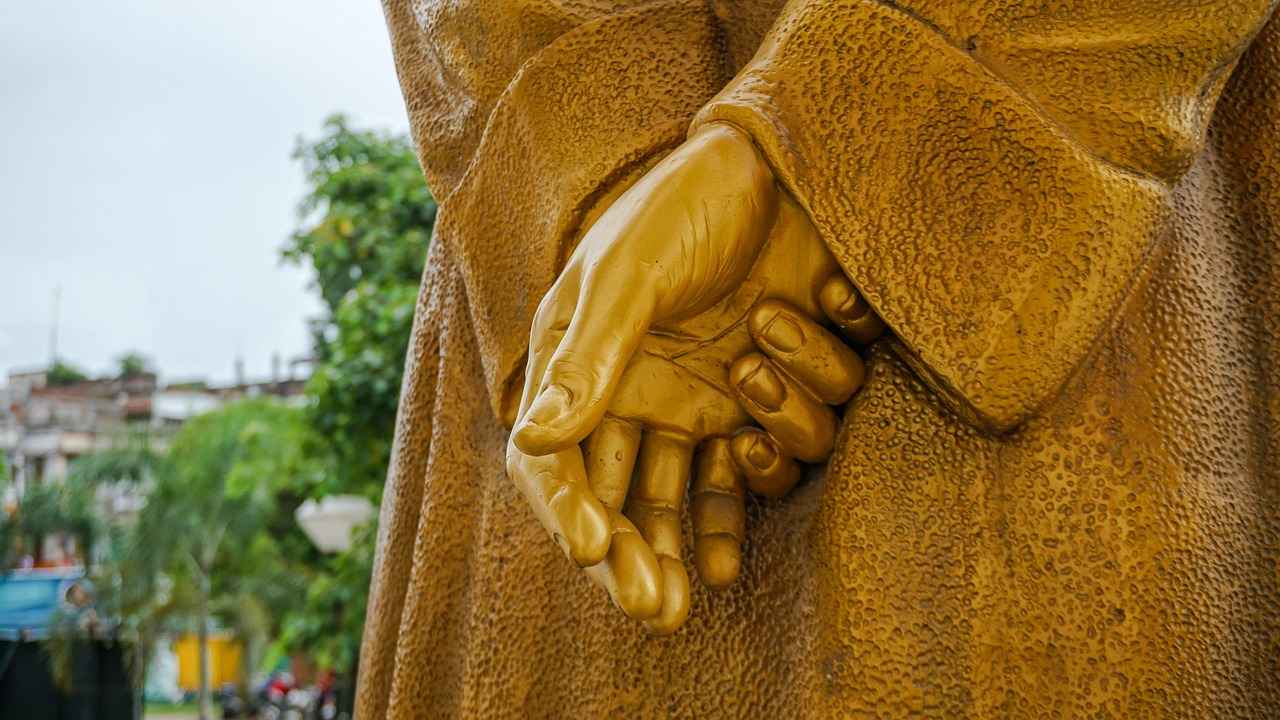
2. The Legacy of Rabindranath Tagore
The Legacy of Rabindranath Tagore is an essential part of India’s cultural fabric, and his contributions to literature, music, and education continue to resonate today. As the founder of Visva-Bharati University, Tagore envisioned an institution that would foster creativity and holistic learning, bridging the gap between tradition and modernity.
Visva-Bharati University, located in the serene town of Santiniketan, serves as a beacon of artistic expression. Established in 1921, it attracts students and scholars from around the globe, offering programs in various fields, including art, music, and literature. Tagore’s philosophy emphasized the importance of nurturing the individual’s innate talents, which is reflected in the university’s innovative teaching methods.
- Innovative Teaching Methods: The university employs a unique approach that encourages students to explore their artistic abilities through experiential learning.
- Cultural Programs: Regular festivals and cultural events at Visva-Bharati not only celebrate Tagore’s legacy but also showcase diverse art forms, enriching the cultural landscape of Santiniketan.
One of the most significant aspects of Tagore’s legacy is his Ashram, where he lived and created many of his masterpieces. This tranquil setting offers visitors a glimpse into his life, allowing them to connect with the inspirations behind his poetry and prose.
Moreover, Tagore’s influence extends beyond the university. His works have inspired generations of artists, musicians, and writers, fostering a vibrant cultural scene that thrives in Santiniketan. The town is known for its artistic vibes and local handicrafts, making it a hub for creativity.
In conclusion, Rabindranath Tagore’s legacy is not just confined to his literary achievements; it is a living, breathing entity that continues to inspire and educate. Visiting Visva-Bharati University offers a unique opportunity to experience this legacy firsthand, making it a must-visit destination for anyone interested in art and culture.
2.1 Tagore’s Influence on Education
Rabindranath Tagore, a luminary in the realm of literature and philosophy, has left an indelible mark on the educational landscape through his visionary ideas. His approach to education was not merely about imparting knowledge but rather about fostering a holistic environment that nurtures creativity, critical thinking, and emotional intelligence.
Tagore’s educational philosophy was rooted in the belief that learning should be an organic process, intertwined with nature and the arts. He founded Visva-Bharati University in Santiniketan, which serves as a testament to his innovative ideas. This institution promotes an interdisciplinary approach, encouraging students to explore their passions across various fields, including art, music, and literature.
One of the key aspects of Tagore’s influence is his emphasis on creativity. He believed that education should inspire students to think outside the box and express themselves freely. This is reflected in the university’s curriculum, which integrates hands-on experiences with theoretical knowledge. Students are encouraged to participate in various cultural activities, fostering a sense of community and collaboration.
Moreover, Tagore’s philosophy advocates for experiential learning, where students learn through direct engagement with their surroundings. This approach not only enhances their understanding of the subject matter but also cultivates a deeper appreciation for the world around them. The serene environment of Santiniketan, with its lush landscapes, serves as a perfect backdrop for this kind of learning.
In conclusion, Tagore’s influence on education is profound and enduring. His vision of a holistic, creative, and experiential learning environment continues to shape the teaching methods and curriculum at Visva-Bharati University today. By embracing these principles, educators can inspire future generations to become not only knowledgeable individuals but also compassionate and innovative thinkers.
2.1.1 Innovative Teaching Methods
Innovative Teaching Methods at Visva-Bharati University are designed to foster creativity and encourage students to discover their artistic abilities. The university, founded by the renowned poet Rabindranath Tagore, has developed a unique educational philosophy that emphasizes experiential learning and holistic development.
The teaching methods employed here are not just traditional lectures; they encompass a variety of approaches that engage students in meaningful ways. For instance, students are encouraged to participate in hands-on workshops, where they can explore different art forms such as painting, music, and dance. This immersive experience allows them to connect with their creative instincts and express themselves freely.
- Collaborative Learning: Group projects and collaborative art sessions foster teamwork and help students learn from one another.
- Field Studies: Students often engage in field studies that encourage them to interact with the local community and environment, enhancing their understanding of cultural contexts.
- Interdisciplinary Approach: The curriculum integrates various disciplines, allowing students to draw connections between art, literature, and social sciences.
Moreover, the university hosts regular cultural festivals and events that provide students with platforms to showcase their talents. These events not only celebrate the rich artistic heritage of the region but also encourage students to engage with the community, thus bridging the gap between education and real-world experiences.
In conclusion, the innovative teaching methods at Visva-Bharati University are pivotal in nurturing the artistic talents of students. By creating an environment that promotes exploration and engagement, the university continues to uphold Tagore’s vision of education as a means of personal and social transformation.
2.1.2 Cultural Programs
Cultural Programs at Visva-Bharati play a pivotal role in preserving and promoting the rich artistic legacy of Rabindranath Tagore. These programs are not just events; they are a celebration of creativity, tradition, and community engagement that resonate deeply within the cultural fabric of Santiniketan.
Throughout the year, Visva-Bharati hosts a variety of cultural festivals and programs that attract both locals and tourists. These events showcase an array of art forms, including music, dance, theater, and visual arts, allowing participants to experience the vibrant cultural scene firsthand. The following are some key aspects of these cultural programs:
- Annual Festivals: Major festivals like Poush Mela and Basanta Utsav are celebrated with great enthusiasm. These events feature traditional performances, art exhibitions, and local handicrafts, creating a lively atmosphere that embodies the spirit of Tagore’s teachings.
- Workshops and Seminars: Regular workshops led by renowned artists and scholars provide opportunities for students and enthusiasts to learn and engage with various art forms. These sessions foster creativity and encourage participants to explore their artistic potential.
- Collaborative Projects: Visva-Bharati often collaborates with local and international artists to create unique art installations and performances. These projects not only enhance the cultural landscape but also promote cross-cultural exchanges.
- Community Involvement: The cultural programs actively involve the local community, encouraging participation from residents of all ages. This inclusivity helps to strengthen community bonds and promotes a sense of belonging.
In addition to these events, the university’s emphasis on interdisciplinary learning allows students to engage with various art forms, further enriching their educational experience. The cultural programs at Visva-Bharati serve as a testament to Tagore’s vision of a holistic education that nurtures the mind and spirit.
In conclusion, the vibrant cultural programs and festivals at Visva-Bharati not only celebrate Tagore’s legacy but also enrich the cultural landscape of Santiniketan, making it a unique destination for art lovers and cultural enthusiasts alike.
2.2 Tagore’s Ashram
Tagore’s Ashram is a significant landmark in the heart of Santiniketan, West Bengal, where the renowned poet and philosopher, Rabindranath Tagore, spent a considerable part of his life. This ashram not only served as his residence but also as a creative sanctuary where he penned many of his famous works. The serene environment and the rich cultural backdrop of the ashram deeply influenced his poetry and philosophy.
The Santiniketan Ashram was founded in 1901 by Tagore as a place for artistic and spiritual pursuits. It embodies his vision of education that integrates nature, art, and culture. Visitors to the ashram can explore the various structures, including his living quarters, which have been preserved to reflect the lifestyle and thoughts of Tagore.
| Key Features of Tagore’s Ashram | Description |
|---|---|
| Architecture | The ashram showcases unique architectural styles, blending traditional Bengali designs with modern influences. |
| Artistic Inspirations | Tagore’s interactions with nature and local culture inspired many of his literary works, evident in the surroundings of the ashram. |
| Cultural Events | The ashram hosts various cultural programs and festivals that celebrate Tagore’s legacy, drawing visitors from around the world. |
Visitors can also enjoy guided tours that delve into Tagore’s life, exploring his philosophies and the impact of his works on Indian literature and culture. The ashram’s tranquil gardens and open spaces provide a perfect setting for reflection and meditation, allowing guests to connect with the profound serenity that Tagore cherished.
In conclusion, a visit to Tagore’s Ashram offers not just a glimpse into the life of a literary giant but also an opportunity to experience the harmonious blend of nature, art, and education that Tagore envisioned. It is a must-visit for anyone seeking inspiration and a deeper understanding of India’s cultural heritage.

3. Scenic Natural Beauty
The scenic landscapes of Santiniketan are truly a feast for the eyes, offering a harmonious blend of nature and tranquility. Nestled in West Bengal, this enchanting destination is characterized by its lush greenery, serene lakes, and picturesque surroundings, making it an ideal spot for relaxation and reflection. Visitors often find themselves captivated by the beauty that envelops this charming town.
One of the most striking features of Santiniketan is its lush greenery. The area is dotted with vibrant trees, flowering plants, and sprawling gardens that create a refreshing atmosphere. The cool shade provided by these trees makes it a perfect spot for leisurely walks or quiet picnics. Many travelers find solace in the natural beauty that surrounds them, allowing for moments of introspection and peace.
In addition to the greenery, the tranquil lakes in Santiniketan add to the serene environment. These calm bodies of water reflect the sky and surrounding landscapes, creating a picturesque setting ideal for photography or simply soaking in the beauty of nature. The sound of gentle waves lapping against the shore enhances the peaceful ambiance, making it a popular spot for meditation and reflection.
- Peaceful Environment: The overall atmosphere of Santiniketan is quiet and calming, providing an escape from the chaos of urban life.
- Flora and Fauna: The region boasts diverse flora and fauna, with opportunities for nature enthusiasts to explore and appreciate local wildlife.
Whether you are seeking a place to unwind or looking for inspiration in nature, the scenic beauty of Santiniketan is sure to leave a lasting impression. The combination of lush landscapes and tranquil waters creates a unique backdrop that invites visitors to relax and reflect on the beauty of life.
3.1 The Peaceful Environment
The peaceful environment of Santiniketan is a remarkable aspect that draws visitors seeking solace and tranquility. Nestled amidst lush greenery and serene landscapes, this destination offers a refreshing escape from the frenetic pace of urban life. The gentle rustling of leaves, the melodious chirping of birds, and the soft whispers of the wind create a harmonious atmosphere that invites relaxation and introspection.
In Santiniketan, the natural beauty is not just a backdrop; it plays a vital role in fostering a sense of peace. The tranquil lakes and sprawling fields provide ample opportunities for leisurely strolls, meditation, and reflection. Visitors often find themselves captivated by the stunning sunrises and sunsets that paint the sky in vibrant hues, enhancing the overall experience of serenity.
Moreover, the absence of the typical city noise allows individuals to connect with their thoughts and emotions more deeply. This environment is particularly beneficial for those seeking to unwind from the stresses of daily life. Many travelers report feeling rejuvenated after spending time in this peaceful setting, as it encourages mindfulness and a deeper appreciation for nature.
To further enhance the experience, Santiniketan offers various meditation centers and quiet spots where visitors can engage in mindfulness practices. These spaces are designed to promote relaxation and self-discovery, making Santiniketan an ideal destination for spiritual seekers and those looking to recharge their mental batteries.
In conclusion, the peaceful ambiance of Santiniketan not only allows visitors to unwind but also fosters a profound connection with nature and oneself. This unique environment is a significant reason why Santiniketan remains a cherished retreat for many.
3.2 Flora and Fauna
The natural landscape of Santiniketan is a treasure trove for nature lovers and wildlife enthusiasts. The region boasts a rich diversity of flora and fauna, making it an ideal destination for those who appreciate the beauty of the natural world.
Visitors can explore a variety of ecosystems, ranging from lush forests to serene wetlands. The area is home to numerous species of plants, trees, and wildlife, many of which are endemic to the region. Here are some highlights:
- Flora: The landscape is dotted with beautiful Sal trees, Palm trees, and vibrant flowering plants, creating a picturesque environment ideal for leisurely strolls.
- Fauna: Wildlife enthusiasts can spot various species of birds, including the Indian Peafowl, Kingfisher, and many migratory birds that visit during certain seasons.
- Local Ecosystems: The wetlands surrounding Santiniketan serve as habitats for various aquatic species, providing vital ecological balance.
For those interested in birdwatching, Santiniketan offers guided tours that allow visitors to observe these magnificent creatures in their natural habitat. Additionally, the region’s commitment to conservation efforts ensures that the local ecosystem remains protected and thriving.
Overall, the diverse flora and fauna of Santiniketan not only enhance its natural beauty but also provide a unique opportunity for visitors to connect with nature. Whether you are hiking through the forests or simply enjoying the tranquil lakes, the region’s rich biodiversity is sure to leave a lasting impression.

4. Artistic Vibes
Santiniketan is not just a destination; it is a vibrant canvas of creativity that reflects the artistic spirit of its inhabitants. The town has long been recognized as a hub for artists and craftsmen, showcasing an eclectic mix of traditional and contemporary art forms. This artistic vibe is deeply rooted in the region’s cultural heritage, making it a must-visit for art enthusiasts and travelers alike.
Visitors to Santiniketan have the unique opportunity to explore the workshops and studios of local artisans. From intricate handwoven textiles to stunning pottery, the craftsmanship on display is a testament to the skills passed down through generations. Tourists can engage with these artisans, learning about their techniques and the stories behind their creations.
The artistic atmosphere of Santiniketan is further enriched by numerous art festivals held throughout the year. Events such as the Poush Mela and Basanta Utsav not only celebrate traditional art forms but also provide a platform for contemporary artists to showcase their work. These festivals attract visitors from all over, creating a lively and interactive environment that fosters artistic exchange.
In addition to festivals, Santiniketan is home to several art galleries that feature exhibitions from both local and international artists. These galleries serve as a space for innovation, where contemporary art meets traditional influences, offering a rich experience for art lovers. Visitors can immerse themselves in the diverse art scene, appreciating the various styles and mediums on display.
Institutions like Visva-Bharati University, founded by Rabindranath Tagore, play a crucial role in nurturing artistic talent. The university’s curriculum emphasizes creativity and holistic learning, encouraging students to explore their artistic potential. This commitment to art education has cultivated a new generation of artists who continue to contribute to Santiniketan’s vibrant cultural landscape.
In conclusion, Santiniketan’s artistic vibes create a unique environment that celebrates both tradition and innovation. Whether you’re an art connoisseur or simply curious about the creative process, a visit to this enchanting town promises an enriching experience that resonates long after you leave.
4.1 Local Handicrafts
Local Handicrafts in Santiniketan are a vibrant reflection of the region’s rich artistic heritage. Visitors to this charming town have the unique opportunity to delve into a world of creativity by exploring local markets and workshops. Here, they can discover an array of beautiful handicrafts that include pottery, weaving, and paintings, each crafted with passion and skill by local artisans.
The pottery in Santiniketan is not just functional; it is a form of art. Artisans use traditional techniques passed down through generations to create stunning pieces that often depict the essence of Bengali culture. Visitors can witness the pottery-making process firsthand, gaining insight into the meticulous craftsmanship involved.
Weaving is another significant craft in the area, with local weavers producing exquisite textiles that showcase intricate designs and vibrant colors. The handwoven fabrics are not only beautiful but also serve as a testament to the talent and dedication of the artisans. By purchasing these items, visitors support the local economy and help preserve these traditional crafts.
Additionally, the paintings found in Santiniketan often draw inspiration from nature and local folklore. Many artists set up their studios in the open air, allowing them to capture the stunning landscapes that surround them. Visitors can engage with these artists, learn about their techniques, and even participate in workshops to create their own masterpieces.
By exploring the local markets and workshops, visitors not only take home unique souvenirs but also contribute to the sustainability of the local artisan community. This interaction fosters a deeper understanding of the cultural significance behind each craft, making the experience enriching and memorable.
In conclusion, the local handicrafts of Santiniketan offer a wonderful opportunity to connect with the region’s artistic legacy while supporting the talented individuals who keep these traditions alive. Whether it’s through purchasing a handmade pottery piece or participating in a weaving workshop, visitors can leave with more than just a souvenir; they can carry a piece of Santiniketan’s heart with them.
4.2 Art Festivals
Art Festivals in Santiniketan are a vibrant celebration of creativity and cultural expression, drawing artists and art enthusiasts from all over. These festivals are not just events; they are a platform for showcasing the rich artistic heritage of the region and fostering community engagement.
Throughout the year, Santiniketan hosts a variety of art festivals that cater to different art forms, including visual arts, music, dance, and theater. Here are some highlights:
- Poush Mela: This winter fair is a significant event that features local artisans and performers, celebrating the essence of Santiniketan’s cultural roots.
- Basanta Utsav: A spring festival that embodies the spirit of renewal, where the community comes together to celebrate with traditional music, dance, and vibrant colors.
- Visva-Bharati’s Annual Art Exhibition: This exhibition showcases the works of students and faculty, providing a glimpse into contemporary artistic practices influenced by Tagore’s teachings.
The art festivals are not only about displaying art; they also encourage participation from the community. Workshops and interactive sessions are often held, allowing visitors to engage directly with artists, learn new skills, and appreciate the creative process. This interaction fosters a sense of belonging and appreciation for the arts within the local community.
Moreover, these festivals attract a diverse audience, including tourists, art collectors, and scholars, creating a dynamic atmosphere that promotes cultural exchange. The blending of traditional and modern art forms during these festivals reflects the evolution of Santiniketan as a hub of creativity.
In conclusion, the art festivals in Santiniketan are a testament to the town’s commitment to preserving its artistic legacy while embracing innovation. They provide an enriching experience for both artists and visitors, making it a must-visit destination for anyone passionate about the arts.

5. Unique Festivals and Celebrations
Santiniketan is a treasure trove of vibrant festivals and celebrations that showcase the region’s rich cultural tapestry. These events are not merely gatherings; they are a blend of traditional customs and artistic expressions that create a lively atmosphere, drawing visitors from all walks of life. The festivals here are a true reflection of the community’s spirit, offering a unique insight into the local way of life.
One of the most notable festivals is the Poush Mela, which takes place during the winter season. This fair is a celebration of local culture, featuring a myriad of activities such as music, dance, and culinary delights. Visitors can immerse themselves in the local traditions, enjoying performances that highlight the region’s artistic heritage. The Poush Mela not only attracts locals but also tourists who seek to experience the authentic essence of Santiniketan.
Another significant celebration is the Basanta Utsav, or the Spring Festival. This event is a riot of colors where participants dress in vibrant attire and engage in songs and dances that celebrate the arrival of spring. The festival is deeply rooted in the teachings of Rabindranath Tagore, emphasizing the joy of renewal and the beauty of nature. The atmosphere is electric, filled with laughter and music, making it a must-see for anyone visiting during this time.
- Community Involvement: The festivals encourage participation from all community members, fostering a sense of unity and belonging.
- Artistic Displays: Various art forms, including dance, drama, and visual arts, are showcased, highlighting the talent of local artists.
- Culinary Experiences: Food stalls offer a variety of traditional Bengali dishes, allowing visitors to savor the local flavors.
In summary, the unique festivals of Santiniketan are not just events; they are a celebration of life, culture, and art. These festivities provide a wonderful opportunity for visitors to engage with the local community and experience the vibrant spirit of this remarkable place.
5.1 Poush Mela
The Poush Mela, held annually during the winter season, is one of the most anticipated events in Santiniketan, West Bengal. This vibrant fair is a celebration of local culture, drawing visitors from far and wide to experience its unique blend of music, dance, and culinary delights.
At the heart of the Poush Mela lies the essence of Bengali tradition. The fair showcases a variety of local crafts, with artisans displaying their skills in pottery, weaving, and painting. Visitors can wander through colorful stalls filled with handmade goods, offering a chance to purchase authentic souvenirs while supporting local craftsmen.
One of the highlights of the Poush Mela is the live performances. Traditional folk music and dance are integral to the event, with local artists performing on stages throughout the fairgrounds. These performances not only entertain but also educate visitors about the rich cultural heritage of the region. The rhythmic beats of baul music and the graceful movements of folk dancers create an atmosphere that is both lively and enchanting.
The culinary scene at Poush Mela is equally impressive. Food stalls serve a variety of Bengali delicacies, from mouthwatering sweets like rasgulla to savory dishes such as shorshe ilish (hilsa fish in mustard sauce). The aroma of freshly cooked food wafts through the air, enticing visitors to indulge in the flavors of Bengali cuisine.
Moreover, the fair serves as a platform for cultural exchange, where people from different backgrounds come together to celebrate art and tradition. Workshops and interactive sessions allow attendees to engage directly with artists, providing a deeper understanding of the cultural practices that define Santiniketan.
In conclusion, the Poush Mela is more than just a fair; it is a vibrant tapestry of culture, artistry, and community spirit. Whether you are a local or a traveler, this event is an unmissable opportunity to immerse yourself in the rich heritage of Santiniketan.
5.2 Basanta Utsav
Basanta Utsav, also known as the festival of spring, is a vibrant celebration that reflects the essence of nature’s renewal and the artistic spirit of Rabindranath Tagore. This festival, deeply rooted in the traditions of Bengal, marks the arrival of spring and is celebrated with great enthusiasm in Santiniketan, where Tagore founded Visva-Bharati University.
During Basanta Utsav, the campus comes alive with colorful decorations, and the air is filled with the sounds of joyous dances and songs. Students and locals dress in bright yellow and orange attire, symbolizing the blooming mustard fields that herald spring. This vibrant display of colors is not just a feast for the eyes but also a heartfelt tribute to Tagore’s poetry, which often celebrates the beauty of nature.
The festivities typically include a variety of cultural performances, such as traditional dances, musical recitals, and theatrical presentations. These performances showcase the rich artistic heritage of the region and evoke the spirit of Tagore’s literary works. The celebration also serves as a platform for young artists to express themselves and connect with their cultural roots.
- Community Participation: The festival encourages participation from the local community, fostering a sense of unity and shared joy.
- Artistic Expression: Various art forms are showcased, highlighting the creativity that Tagore inspired.
- Food and Festivities: Local delicacies and traditional sweets add flavor to the celebrations, making it a sensory delight.
In conclusion, Basanta Utsav is more than just a festival; it is a celebration of life, creativity, and the profound connection between nature and art. Visiting Santiniketan during this time offers a unique opportunity to experience the rich cultural tapestry of Bengal and to witness the joyous spirit that Tagore envisioned.

6. Culinary Delights
Culinary Delights
The culinary scene in Santiniketan is a vibrant tapestry of flavors, offering visitors a chance to immerse themselves in the rich and diverse world of Bengali cuisine. Known for its unique blend of spices and fresh ingredients, the local food culture is a delightful experience that is not to be missed.
6.1 Traditional Bengali Cuisine
From fish curries to vegetarian dishes, Santiniketan’s eateries serve authentic Bengali meals that showcase the region’s culinary heritage. Signature dishes like Shorshe Ilish (hilsa fish in mustard sauce) and Chingri Malai Curry (prawn curry cooked in coconut milk) are staples that reflect the local palate. For those with a sweet tooth, traditional desserts such as Rasgulla and Sandesh offer a perfect end to any meal.
6.2 Local Cafes and Eateries
Charming cafes and small eateries are scattered throughout the town, providing a cozy atmosphere for visitors to enjoy their meals. These establishments often feature outdoor seating, allowing diners to soak in the serene surroundings while savoring their food. Many of these cafes also emphasize locally sourced ingredients, ensuring that each dish is fresh and flavorful.
- Popular Cafes:
- Amra Sabai – Known for its traditional Bengali sweets and snacks.
- Bonolota – A favorite for its delicious fish curries and vegetarian options.
- Shantiniketan Cafe – Offers a variety of international dishes alongside local favorites.
6.3 Culinary Experiences
For those looking to delve deeper into Bengali cooking, Santiniketan offers culinary workshops where visitors can learn to prepare traditional dishes. These hands-on experiences not only teach cooking techniques but also provide insights into the cultural significance of the food.
Conclusion
In summary, the culinary delights of Santiniketan are a feast for the senses, offering a unique opportunity to explore the flavors of Bengal. Whether you are enjoying a meal at a local cafe or participating in a cooking workshop, the food culture here is sure to enhance your overall experience in this artistic haven.
6.1 Traditional Bengali Cuisine
Santiniketan, a cultural gem in West Bengal, is not only renowned for its rich heritage and artistic legacy but also for its delectable traditional Bengali cuisine. The culinary offerings here are a true reflection of the region’s vibrant culture and agricultural bounty.
Visitors can indulge in a variety of dishes that highlight the unique flavors and cooking techniques of Bengali food. Fish curries, particularly shorshe ilish (hilsa fish cooked in mustard sauce), are a must-try for seafood lovers. This dish exemplifies the use of fresh, local ingredients that are a hallmark of Bengali cooking.
Moreover, the use of spices such as panch phoron (a blend of five spices) and mustard oil enhances the flavors, creating a rich and aromatic experience. Vegetarians can savor dishes like shukto, a mixed vegetable curry, and aloo posto, which features potatoes cooked with poppy seeds.
When it comes to sweets, Santiniketan does not disappoint. The famous rasgulla, a soft and spongy cheese ball soaked in sugar syrup, is a delightful treat that embodies the essence of Bengali desserts. Other popular sweets include mishti doi (sweetened yogurt) and sandesh, which are often enjoyed during festivals and special occasions.
In addition to traditional dishes, the local eateries and cafes offer a cozy atmosphere where visitors can experience the warmth of Bengali hospitality. Many establishments pride themselves on serving authentic meals made from family recipes passed down through generations.
Overall, exploring the culinary landscape of Santiniketan is an essential part of the travel experience. With each dish, visitors not only enjoy a meal but also partake in the rich cultural tapestry that defines Bengali identity.
6.2 Local Cafes and Eateries
Charming cafes and eateries are an integral part of the vibrant landscape of Santiniketan, offering visitors a cozy atmosphere to indulge in delicious meals while immersing themselves in the local culture. These establishments, each with its own unique character, provide a delightful respite for travelers exploring this artistic town.
As you stroll through the streets, you will encounter a variety of local cafes that reflect the essence of Bengali hospitality. Many of these spots are adorned with colorful artwork and traditional decor, creating an inviting ambiance. Whether you’re in the mood for a quick snack or a leisurely meal, these cafes serve an array of options that cater to every palate. From aromatic chai to freshly baked pithas (rice cakes), the culinary offerings are a celebration of local flavors.
| Cafe Name | Specialty | Ambiance |
|---|---|---|
| Chai Ghar | Masala Chai | Cozy and Rustic |
| Bonolota | Traditional Bengali Thali | Artistic and Colorful |
| Shantiniketan Cafe | Fresh Pithas | Serene and Relaxing |
Moreover, these eateries often host cultural events and live music, further enhancing the experience. Visitors can enjoy local performances while savoring their meals, creating a memorable dining experience that connects them to the heart of Santiniketan’s artistic community.
In addition to traditional Bengali dishes, many cafes also offer a fusion of international cuisines, ensuring that there’s something for everyone. This blend of flavors not only highlights the town’s diversity but also fosters an environment of culinary exploration.
As you plan your visit, make sure to explore these charming cafes and eateries; they are more than just places to eat—they are cultural hubs where food, art, and community come together, making your stay in Santiniketan truly unforgettable.

7. Accessibility and Connectivity
Santiniketan is a convenient getaway for travelers, thanks to its excellent accessibility from major cities in India. This unique destination is designed to welcome visitors who wish to immerse themselves in its rich cultural tapestry.
7.1 Transportation Options
Travelers can easily reach Santiniketan using various transportation methods:
- By Train: The nearest railway station is Bolpur, which is well-connected to major cities like Kolkata and Howrah. Trains run frequently, making it a hassle-free option for travelers.
- By Bus: Numerous bus services operate from Kolkata and other nearby towns, providing an affordable way to reach Santiniketan.
- By Car: For those who prefer to drive, the NH 14 highway offers a scenic route to Santiniketan, with well-maintained roads.
7.2 Proximity to Other Attractions
In addition to its own charms, Santiniketan serves as a perfect base for exploring nearby attractions:
- Bolpur: Just a short distance away, this historic town is rich in cultural heritage and offers additional insights into the life of Rabindranath Tagore.
- Bakreshwar Hot Springs: Located nearby, these natural hot springs provide a relaxing experience for visitors looking to unwind.
- Ramnagar: Known for its picturesque landscapes, Ramnagar is another nearby destination worth visiting.
The ease of access to Santiniketan, combined with its proximity to other attractions, makes it an ideal choice for both short trips and extended stays. Whether you are seeking a cultural experience or a peaceful retreat, Santiniketan is well-equipped to cater to your travel needs.
7.1 Transportation Options
When planning a trip to Santiniketan, one of the key factors to consider is how to get there. Fortunately, Santiniketan is well-connected to various nearby cities through several transportation options, making it convenient for travelers.
- Trains: The nearest railway station is Bolpur Shantiniketan, which is just a few kilometers away from Santiniketan. Regular trains from major cities like Kolkata and Howrah operate, providing a comfortable and scenic journey. The train ride allows travelers to enjoy the lush landscapes of West Bengal.
- Buses: A network of buses connects Santiniketan to various towns and cities. State-run and private buses frequently run from Kolkata, Bolpur, and other nearby locations, ensuring that visitors have ample options for travel. The bus service is both economical and efficient.
- Rickshaws and Taxis: Within Santiniketan, auto-rickshaws and taxis are readily available for local transportation. They provide an easy way to navigate the area and reach popular attractions like Visva-Bharati University and Tagore’s Ashram.
- Car Rentals: For those who prefer to drive, car rental services are available in the region. This option allows for greater flexibility and the opportunity to explore the surrounding areas at your own pace.
Overall, the combination of trains, buses, and local transport options ensures that reaching Santiniketan is both affordable and convenient. Whether you’re coming from a nearby city or planning to explore the local attractions, the transportation network supports a smooth travel experience.
7.2 Proximity to Other Attractions
When visiting Santiniketan, travelers are not only treated to its rich cultural heritage and artistic ambiance but also have the opportunity to explore a variety of nearby attractions that enhance their overall experience. One such destination is the historic town of Bolpur, which is closely linked to Santiniketan and offers a glimpse into the region’s vibrant history and lifestyle.
Bolpur is renowned for its traditional crafts and local markets where visitors can purchase handmade items, including beautiful textiles and intricate pottery. The town’s streets are filled with the essence of Bengali culture, making it an ideal spot for those looking to immerse themselves in local traditions.
In addition to Bolpur, visitors can also venture to the Bakreshwar Hot Springs, located just a short drive away. This natural wonder is famous for its therapeutic hot springs, which are believed to possess healing properties. Surrounded by lush greenery and serene landscapes, Bakreshwar provides a perfect escape for relaxation and rejuvenation. Many visitors take the opportunity to enjoy a soothing soak in the warm waters, making it a popular destination for both tourists and locals alike.
Furthermore, the area surrounding Santiniketan is dotted with other attractions that cater to various interests. For nature lovers, the Chandraketugarh archaeological site offers a fascinating glimpse into ancient civilizations, while the lush forests and rivers nearby provide ample opportunities for trekking and birdwatching.
In summary, the proximity of Santiniketan to attractions such as Bolpur and Bakreshwar Hot Springs not only enriches the travel experience but also allows visitors to explore the diverse cultural and natural landscapes of West Bengal. This makes it a perfect base for those looking to delve deeper into the region’s offerings.

8. Warm Hospitality
The warm and welcoming nature of the locals in Santiniketan significantly enhances the charm of this unique destination. Visitors often find themselves enveloped in an atmosphere of genuine friendliness, which makes their stay feel less like a mere trip and more like a homecoming. This sense of belonging is one of the many reasons why Santiniketan is beloved by travelers from around the world.
Engaging with the locals provides visitors with a rare opportunity to delve into the rich cultural tapestry of the region. The people of Santiniketan are not only hospitable but also eager to share their traditions and stories. This interaction fosters a deeper understanding of the local customs and the historical significance of Santiniketan, making the experience all the more enriching.
Many travelers choose to stay in homestays and guesthouses, which offer a more intimate glimpse into the daily lives of the residents. These accommodations are often run by local families who take pride in providing a personalized experience. Guests can enjoy home-cooked meals, participate in local festivities, and even learn traditional crafts, all of which contribute to a memorable visit.
Moreover, the community’s commitment to hospitality extends beyond just accommodations. Visitors often find themselves invited to local events and celebrations, such as Poush Mela and Basanta Utsav, where they can immerse themselves in the vibrant culture of Santiniketan. Such experiences not only foster connections but also create lasting memories that travelers cherish long after they leave.
In conclusion, the warm hospitality of Santiniketan’s locals is a vital element that enhances the overall experience of visitors. It transforms a simple visit into a journey filled with connection, understanding, and lasting friendships.
8.1 Community Engagement
Community engagement is a vital aspect of any travel experience, especially in a culturally rich place like Santiniketan. By interacting with the locals, visitors can gain a deeper understanding of the region’s traditions and customs, which enhances their overall journey.
In Santiniketan, the community is known for its warmth and hospitality. Engaging with residents allows travelers to learn about the history and philosophies that shape this unique town. Local artisans, musicians, and storytellers share their crafts and tales, providing visitors with a firsthand look at the cultural tapestry that defines Santiniketan.
- Participate in Local Festivals: Festivals like Basanta Utsav and Poush Mela offer vibrant opportunities for visitors to join in the celebrations, experiencing the local culture through music, dance, and food.
- Visit Artisans and Workshops: Engaging with local craftsmen in their workshops allows visitors to appreciate the intricate processes behind traditional handicrafts, such as pottery and weaving.
- Attend Community Events: Community gatherings and cultural programs provide a platform for interaction, where visitors can converse with locals and gain insights into their daily lives.
Moreover, local homestays and guesthouses offer an immersive experience, allowing visitors to live alongside residents. This not only supports the local economy but also fosters meaningful connections between travelers and the community.
Ultimately, community engagement in Santiniketan enriches the travel experience, leaving visitors with lasting memories and a profound appreciation for the region’s cultural heritage. By embracing the local way of life, travelers can truly understand the essence of Santiniketan, making their visit unforgettable.
8.2 Homestays and Guesthouses
When visiting Santiniketan, choosing the right accommodation can significantly enhance your experience. A variety of homestays and guesthouses offer comfortable lodgings, allowing visitors to immerse themselves in the local lifestyle. These accommodations not only provide a place to stay but also serve as a gateway to understanding the rich cultural tapestry of the region.
Staying in a homestay or guesthouse allows travelers to enjoy the warmth of local hospitality. Many of these establishments are run by families who are eager to share their traditions and stories. Visitors can experience daily life in Santiniketan, from participating in local rituals to enjoying home-cooked meals made with fresh, local ingredients.
- Authentic Experience: Homestays often reflect the architectural style and decor of the region, providing an authentic ambiance that hotels may lack.
- Personalized Services: Many hosts offer personalized services, such as guided tours around the town, cultural workshops, and even cooking classes, making your stay unique.
- Affordable Options: For budget travelers, homestays and guesthouses typically offer more affordable rates compared to hotels, making them accessible to a wider audience.
Additionally, these accommodations are often located in tranquil settings, surrounded by nature, allowing guests to unwind and reflect. Visitors can enjoy leisurely walks through the serene landscapes, engage in local art activities, or simply relax in the peaceful environment.
In conclusion, choosing a homestay or guesthouse in Santiniketan not only provides comfortable accommodations but also enriches your travel experience by connecting you with the local culture and community. Whether you are an art enthusiast, a nature lover, or simply looking for a peaceful retreat, these options offer the perfect base for your Santiniketan adventure.

9. Opportunities for Reflection and Meditation
The tranquil environment of Santiniketan serves as a sanctuary for those yearning for peace and solitude. Nestled amidst lush greenery and serene landscapes, this picturesque town invites visitors to engage in deep reflection and meditation.
With its rich cultural backdrop, Santiniketan offers a unique setting for personal growth and spiritual exploration. The calm ambiance encourages individuals to disconnect from the chaos of daily life and reconnect with their inner selves. Here are some key features that make Santiniketan an ideal destination for reflection and meditation:
- Natural Serenity: The surrounding nature, including tranquil lakes and expansive green fields, creates a peaceful atmosphere conducive to meditation.
- Meditation Centers: Numerous meditation centers in Santiniketan provide guided sessions and workshops that help visitors delve into mindfulness practices.
- Spiritual Retreats: Spiritual retreats focusing on self-discovery and personal growth are available, offering structured programs that enhance the meditation experience.
- Community Engagement: Engaging with the local community allows visitors to learn about traditional practices, further enriching their reflective journey.
Moreover, the presence of Rabindranath Tagore’s legacy adds a profound dimension to the experience. His philosophies on art and education encourage a holistic approach to life, prompting visitors to reflect on their own paths. The tranquil surroundings, combined with Tagore’s teachings, create a space where one can truly find peace.
In conclusion, Santiniketan is not just a destination; it is a journey into the self. Whether you are looking to meditate, reflect, or simply escape the hustle and bustle of modern life, this enchanting town offers the perfect backdrop for your spiritual journey.
9.1 Meditation Centers
In the heart of Santiniketan, the atmosphere is infused with a sense of serenity and introspection. This unique destination not only celebrates artistic expression but also offers numerous meditation centers that play a pivotal role in promoting mindfulness and inner peace. These centers provide a sanctuary for visitors seeking to connect with their inner selves amidst the lush landscapes and tranquil surroundings.
Several meditation centers in the area offer guided sessions and workshops led by experienced instructors. These sessions cater to both beginners and seasoned practitioners, making meditation accessible to everyone. Participants can immerse themselves in various techniques, including breath awareness, mindfulness meditation, and loving-kindness practices. The serene environment enhances the experience, allowing individuals to focus and deepen their practice.
In addition to regular meditation sessions, many centers organize retreats that span several days. These retreats provide an opportunity for participants to disconnect from the chaos of daily life and engage in a more profound exploration of their inner selves. Activities often include yoga, nature walks, and group discussions, fostering a sense of community among attendees.
One particularly popular center, Shanti Niketan, is renowned for its holistic approach to well-being. Here, visitors can participate in workshops that not only focus on meditation but also on nutrition, art therapy, and self-discovery. This comprehensive approach ensures that individuals leave feeling rejuvenated and equipped with tools for personal growth.
Moreover, the presence of these meditation centers in Santiniketan aligns beautifully with the town’s artistic legacy, rooted in the teachings of Rabindranath Tagore. His philosophy emphasized the importance of connecting with nature and oneself, making these centers a fitting tribute to his vision.
In conclusion, the meditation centers in Santiniketan offer a unique opportunity for visitors to engage in self-reflection and personal development. With guided sessions, workshops, and retreats set against a backdrop of natural beauty, they provide a holistic experience that enriches the mind, body, and spirit.
9.2 Spiritual Retreats
Spiritual retreats in Santiniketan are designed to foster mindfulness and encourage self-discovery, making this serene location an ideal destination for those seeking personal growth. These retreats provide an opportunity to step away from the chaos of everyday life and immerse oneself in a peaceful environment that promotes introspection and healing.
At these retreats, participants engage in a variety of activities that are tailored to enhance their spiritual journey. Programs often include:
- Meditation Sessions: Guided meditation practices help individuals connect with their inner selves, fostering a sense of calm and clarity.
- Yoga Classes: Yoga is integrated into the schedule, allowing participants to explore the mind-body connection while improving physical health.
- Workshops: Various workshops focus on topics such as mindfulness techniques, emotional healing, and personal development, led by experienced facilitators.
- Nature Walks: The beautiful landscapes of Santiniketan provide the perfect backdrop for reflective walks, encouraging participants to appreciate the beauty of nature.
Many retreats also emphasize the importance of community, allowing participants to share their experiences and support one another in their journeys. This sense of belonging can be incredibly healing and transformative.
Furthermore, Santiniketan’s rich cultural heritage, rooted in the teachings of Rabindranath Tagore, enhances the spiritual experience. The town’s tranquil atmosphere, combined with its artistic legacy, creates a unique environment that nurtures both the mind and spirit.
In conclusion, spiritual retreats in Santiniketan offer a holistic approach to personal growth, combining mindfulness practices, community support, and the beauty of nature. For anyone looking to deepen their understanding of themselves and find peace, Santiniketan is undoubtedly a destination worth exploring.

10. A Blend of Tradition and Modernity
Santiniketan is a remarkable destination that epitomizes the harmonious coexistence of tradition and modernity. This unique town, founded by the illustrious poet Rabindranath Tagore, has evolved into a vibrant cultural hub that attracts a diverse array of visitors seeking both historical depth and contemporary experiences.
The essence of Santiniketan lies in its ability to preserve its rich cultural heritage while embracing modern influences. The town is home to the prestigious Visva-Bharati University, where traditional educational values are interwoven with innovative teaching methods. This educational institution stands as a testament to Tagore’s vision of fostering creativity and holistic learning, allowing students to explore their artistic potential in a nurturing environment.
Moreover, Santiniketan’s artistic landscape is a vibrant tapestry of traditional crafts and contemporary art forms. Local artisans skillfully create stunning handicrafts, while modern galleries showcase innovative works that reflect the region’s evolving cultural narrative. This blend of old and new creates a dynamic atmosphere that resonates with both locals and tourists alike.
Throughout the year, Santiniketan hosts a variety of festivals that celebrate its cultural richness. Events like the Poush Mela and Basanta Utsav not only highlight traditional customs but also incorporate modern artistic expressions, drawing crowds from all over the world.
In conclusion, Santiniketan stands as a beacon of how tradition and modernity can coexist beautifully. Its unique atmosphere, enriched by a legacy of artistic innovation and cultural celebration, makes it a must-visit destination for anyone looking to experience the best of both worlds.
10.1 Contemporary Art Scene
The contemporary art scene in Santiniketan is a vibrant tapestry woven from the creativity of both local and international artists. This unique destination serves as a canvas for artistic expression, where traditional and modern art forms coexist harmoniously. Visitors are often captivated by the innovative works that showcase the rich cultural heritage of the region while also embracing global artistic trends.
Numerous galleries and exhibitions dot the landscape of Santiniketan, each offering a glimpse into the minds of artists who are pushing boundaries and redefining artistic norms. These spaces not only display art but also foster a community of creativity, inviting art lovers to engage and interact with the works on display. Notable galleries include the Birla Academy of Art and Culture and the Visva-Bharati Gallery, which regularly host exhibitions that draw attention from art enthusiasts worldwide.
| Gallery Name | Location | Highlights |
|---|---|---|
| Birla Academy of Art and Culture | Santiniketan | Contemporary exhibitions and workshops |
| Visva-Bharati Gallery | Santiniketan | Showcases student and faculty works |
The town also hosts various art festivals throughout the year, which serve as platforms for artists to showcase their talents and connect with the community. Events like the Poush Mela and Basanta Utsav not only celebrate local culture but also invite artists to present their contemporary works, blending tradition with innovation.
Moreover, the artistic community in Santiniketan is not limited to galleries and exhibitions. Workshops and collaborative projects provide opportunities for budding artists to learn from established figures in the art world, fostering a spirit of mentorship and growth. This dynamic environment encourages experimentation and creativity, making Santiniketan a true haven for art lovers.
In conclusion, the contemporary art scene in Santiniketan is a thriving hub that reflects the town’s rich history while embracing modernity. Whether you are an artist, a collector, or simply an admirer of art, Santiniketan offers an unparalleled experience that is both inspiring and enriching.
10.2 Educational Innovations
Educational Innovations at Visva-Bharati: A Harmonious Blend of Tradition and Modernity
Visva-Bharati University, founded by the illustrious Rabindranath Tagore, stands as a beacon of innovative educational practices that seamlessly integrate with its traditional roots. This unique institution is committed to fostering a learning environment that not only respects cultural heritage but also embraces modern methodologies.
1. Emphasis on Holistic Education
At Visva-Bharati, the philosophy of education extends beyond mere academic excellence. The university promotes a holistic approach that nurtures creativity, emotional intelligence, and civic responsibility. This is evident in their curriculum, which encourages students to engage in various art forms, from music to visual arts, fostering a comprehensive learning experience.
2. Interdisciplinary Learning
One of the key innovations at Visva-Bharati is the emphasis on interdisciplinary learning. Students are encouraged to explore connections between different fields of study, allowing them to cultivate a more rounded perspective. This approach not only enhances critical thinking but also prepares students for the complexities of the modern world.
3. Use of Technology in Education
Incorporating technology into the educational framework is another significant advancement. The university utilizes digital tools and online resources to enhance learning, making education more accessible and engaging for students. This integration of technology ensures that students are well-prepared for a rapidly evolving global landscape.
4. Community Engagement and Practical Learning
Visva-Bharati emphasizes community engagement as a vital component of education. Students actively participate in local projects, which not only enriches their learning experience but also strengthens ties with the community. This hands-on approach allows students to apply theoretical knowledge in real-world scenarios, fostering a sense of responsibility and social awareness.
5. Global Collaboration
The university has established numerous partnerships with international institutions, promoting global collaboration. This exchange of ideas and resources enhances the learning environment, exposing students to diverse perspectives and methodologies. Such collaborations also facilitate cultural exchanges, enriching the educational experience at Visva-Bharati.
In conclusion, the educational innovations at Visva-Bharati reflect a deep commitment to progressive learning while honoring traditional values. This unique blend not only prepares students for academic success but also equips them with the skills necessary to thrive in an ever-changing world. As a result, Visva-Bharati remains a pioneering institution that inspires future generations of learners.

Conclusion: Why Santiniketan Should Be on Your Travel List
Santiniketan is not just a destination; it is an experience that intertwines culture, nature, and artistic expression into a harmonious tapestry. This unique town in West Bengal, India, offers travelers an opportunity to immerse themselves in a rich heritage while enjoying the serene beauty of its surroundings. Here are several compelling reasons why Santiniketan should be on your travel list:
- Immersive Cultural Experience: The town is famous for its connection to Rabindranath Tagore, the Nobel laureate poet who established the Visva-Bharati University. This institution promotes a holistic approach to education, emphasizing creativity and artistic exploration.
- Natural Beauty: Santiniketan is adorned with lush landscapes, tranquil lakes, and vibrant flora. This serene environment not only provides a perfect backdrop for relaxation but also invites visitors to reflect and rejuvenate.
- Artistic Hub: The town is a haven for artists and craftsmen. Visitors can explore local markets filled with traditional handicrafts, from intricate pottery to exquisite paintings, supporting the local artisans.
- Vibrant Festivals: Santiniketan hosts numerous festivals throughout the year, such as Poush Mela and Basanta Utsav, which celebrate local culture through music, dance, and art, creating a lively atmosphere.
- Culinary Delights: The culinary scene offers a taste of authentic Bengali cuisine, with local eateries serving delicious dishes that reflect the region’s rich culinary heritage.
- Warm Hospitality: The local community is known for its welcoming nature, making visitors feel at home. Engaging with locals provides deeper insights into the culture and traditions of Santiniketan.
- Opportunities for Reflection: The tranquil environment makes Santiniketan an ideal place for meditation and self-discovery, with several centers offering guided sessions.
In conclusion, Santiniketan is a destination that resonates with those seeking a meaningful travel experience. Its unique blend of culture, nature, and artistic expression promises to leave a lasting impression on every visitor. Whether you are an art enthusiast, a nature lover, or someone looking for tranquility, Santiniketan has something to offer for everyone.
Frequently Asked Questions
- What is the best time to visit Santiniketan?
The ideal time to visit Santiniketan is during the winter months, from November to February, when the weather is pleasant and perfect for exploring the outdoors and enjoying various festivals.
- How can I reach Santiniketan?
You can easily reach Santiniketan by train or bus from major cities like Kolkata. The nearest railway station is Bolpur, which is just a short drive away from Santiniketan.
- Are there any local delicacies I should try?
Absolutely! Don’t miss out on traditional Bengali dishes like shorshe ilish (hilsa fish in mustard sauce) and rasgulla (sweet cheese balls). The local eateries serve these mouth-watering delicacies that reflect the region’s rich culinary heritage.
- What cultural activities can I participate in?
Santiniketan is vibrant with cultural activities. You can attend art festivals, music concerts, and even workshops that celebrate Rabindranath Tagore’s legacy and the local arts scene.
- Is Santiniketan suitable for family vacations?
Yes, Santiniketan is a great family destination! The peaceful environment, beautiful landscapes, and numerous cultural experiences make it perfect for families looking to bond and explore together.




